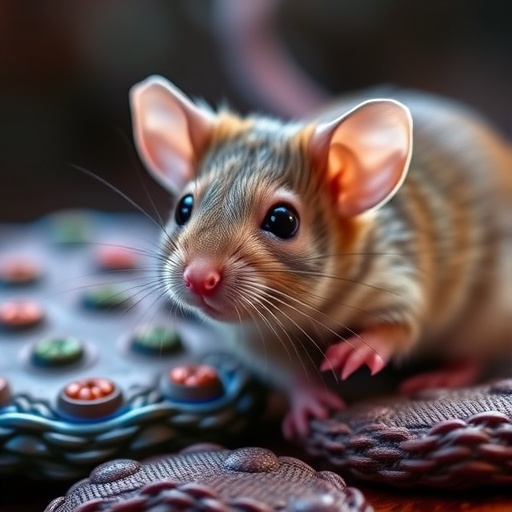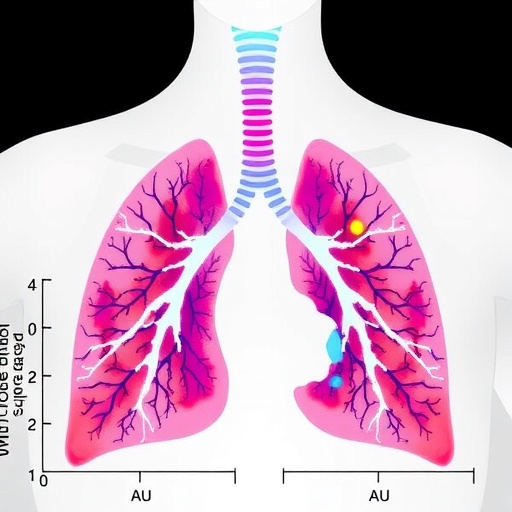In a groundbreaking development that could revolutionize the treatment of chronic liver diseases, researchers have identified a symbiotic filamentous fungus residing in the human gut with the remarkable ability to reverse the progression of metabolic dysfunction-associated steatohepatitis (MASH) in preclinical models. This discovery unearths an untapped microbial frontier within the human gut mycobiome, often overshadowed by bacterial counterparts, presenting promising avenues for novel therapeutic interventions targeting one of the most prevalent and severe forms of fatty liver disease.
Metabolic dysfunction–associated fatty liver disease (MAFLD), encompassing a spectrum of liver abnormalities, currently affects nearly one-quarter of the global adult population, marking it as a pressing public health concern. A particularly severe manifestation, MASH, often leads to cirrhosis and hepatocellular carcinoma, contributing substantially to morbidity and mortality worldwide. Despite its growing incidence, the treatment arsenal for MASH remains remarkably sparse, limited to a single approved drug. This scenario underscores a critical need for innovative therapeutic strategies rooted in a deeper mechanistic understanding of the disease’s progression.
Researchers have long recognized the gut-liver axis as a central player in liver disease pathogenesis, with emerging evidence highlighting the pivotal role of gut microbiota in modulating hepatic outcomes. However, the fungal constituents of the gut microbiome — the mycobiome — have remained largely enigmatic due to significant technical barriers. Traditional in vitro culturing methods fall short in accurately replicating the complex and anaerobic gut environment, resulting in limited isolation and characterization of gut-resident fungal species capable of colonizing human intestines.
Addressing this methodological impasse, Shuang Zhou and colleagues innovated an ingenious fungal isolation technique termed fungal isolation chips (FiChips). These chips emulate the natural fecal microenvironment in situ, facilitating the cultivation and recovery of diverse fungal taxa previously refractory to laboratory culture. By employing FiChips on fecal samples collected from various regions across China, the team cataloged an impressive diversity of 161 fungal species, broadening the mycobiome landscape significantly.
Among these fungal species, members of the genus Fusarium, particularly Fusarium foetens, emerged as resilient inhabitants capable of thriving in oxygen-deprived niches within the gut. Notably, bioinformatic analyses of global human microbiome datasets corroborated the widespread presence of F. foetens, suggesting its integral role in the human gut ecosystem. Such adaptability positioned F. foetens as a prime candidate for investigating potential interactions with host metabolic pathways.
Utilizing a murine model simulating MASH through a high-fat, choline-deficient dietary regimen, Zhou et al. explored the therapeutic potential of F. foetens colonization. Remarkably, mice administered with F. foetens exhibited significant amelioration of liver pathology. Parameters indicative of liver health such as liver weight, serum transaminase levels, and histological markers of steatosis, inflammation, and fibrosis showed pronounced improvement compared to untreated controls, suggesting not only a halt but a reversal in disease progression.
Delving deeper into the molecular underpinnings of this protective effect, the study identified a secreted fungal metabolite, designated FF-C1, produced by F. foetens and several related fungal taxa. Biochemical assays revealed that FF-C1 acts as a potent inhibitor of ceramide synthase 6 (CerS6), an intestinal enzyme intricately linked to ceramide metabolism dysregulation and metabolic disorders. Ceramides, sphingolipid molecules implicated in insulin resistance and inflammatory pathways, have garnered attention as therapeutic targets in metabolic diseases including MASH.
The inhibition of CerS6 by FF-C1 disrupted the ceramide synthesis pathway, thereby dampening the accumulation of deleterious lipid intermediates within hepatic tissues. This mechanistic insight elucidates how a microbiome-derived metabolite can intricately modulate host metabolic signaling, resulting in tangible clinical improvements. The discovery highlights a previously unexplored fungal metabolite-host enzymatic axis, emphasizing the microbial metabolome’s potential in disease modulation.
Experts Lora Hooper and Andrew Koh, in a related Perspective, emphasize the transformative potential of these findings, stating that the fungal microbiome harbors a plethora of bioactive compounds — “microscopic medicinal chemists” — capable of influencing host physiology and offering novel therapeutic modalities. They advocate for expanded exploration into the human mycobiome to unlock these biomedical treasures.
This study’s implications extend beyond MASH treatment, laying foundational knowledge that could inspire microbiome-targeted drug discovery pipelines, capitalizing on the chemical diversity encoded within gut fungi. It also prompts a reevaluation of the gut ecosystem, urging the scientific community to integrate fungal dynamics alongside bacterial constituents in understanding and manipulating human health.
Moreover, the FiChip technology represents a significant methodological advancement, empowering microbiologists to culture and study elusive fungi under conditions closely mimicking their native habitats. This approach may accelerate the identification of other beneficial fungal species and metabolites capable of modulating a spectrum of diseases linked to metabolic and inflammatory dysregulation.
As the global burden of MAFLD and its complications escalates, innovations such as the targeting of the CerS6-ceramide axis by fungal metabolites herald a paradigm shift, from symptomatic management to microbiome-informed therapeutic strategies. The translation of these findings from mouse models to human clinical contexts will be pivotal, with future research needed to validate safety, efficacy, and dosage parameters in diverse populations.
In summary, this pioneering research brings to light a symbiotic filamentous fungus residing in the human gut that produces a secondary metabolite capable of reversing metabolic liver disease progression through modulation of host lipid metabolism. By bridging microbial ecology and metabolic disease pharmacology, it sets the stage for a new class of microbiome-derived therapeutics poised to tackle one of the most daunting global liver health challenges.
Subject of Research: Metabolic dysfunction-associated steatohepatitis (MASH) and the therapeutic potential of gut fungi
Article Title: A symbiotic filamentous gut fungus ameliorates MASH via a secondary metabolite—CerS6—ceramide axis
News Publication Date: 1-May-2025
Web References: http://dx.doi.org/10.1126/science.adp5540
Keywords: metabolic dysfunction-associated steatohepatitis, MAFLD, gut mycobiome, Fusarium foetens, fungal metabolites, CerS6 inhibition, ceramide metabolism, fungal isolation chips, microbiome-derived therapeutics, liver disease, metabolic disorders, sphingolipid pathway
Tags: chronic liver disease treatmentcirrhosis and hepatocellular carcinomafungal microbiota and healthgut mycobiomegut-liver axisinnovative strategies for liver disease managementliver disease public health concernMetabolic dysfunction-associated fatty liver diseasemetabolic dysfunction-associated steatohepatitisnovel therapeutic interventionspreclinical models of liver diseasesymbiotic fungi and liver health





